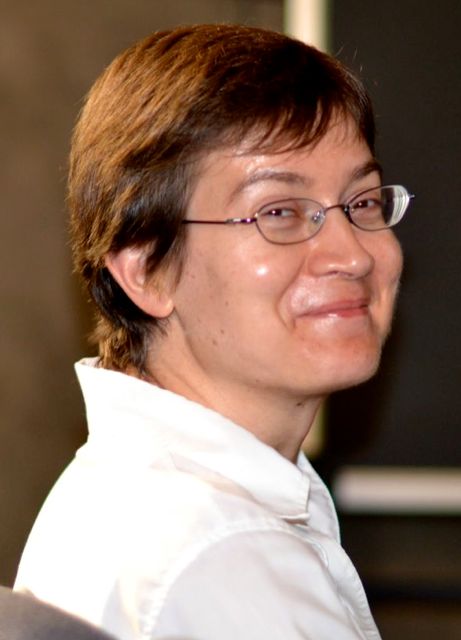Studying at the University of Verona
Here you can find information on the organisational aspects of the Programme, lecture timetables, learning activities and useful contact details for your time at the University, from enrolment to graduation.
Academic calendar
The academic calendar shows the deadlines and scheduled events that are relevant to students, teaching and technical-administrative staff of the University. Public holidays and University closures are also indicated. The academic year normally begins on 1 October each year and ends on 30 September of the following year.
Course calendar
The Academic Calendar sets out the degree programme lecture and exam timetables, as well as the relevant university closure dates..
| Period | From | To |
|---|---|---|
| I sem. | Oct 2, 2017 | Jan 31, 2018 |
| II sem. | Mar 1, 2018 | Jun 15, 2018 |
| Session | From | To |
|---|---|---|
| Sessione invernale d'esame | Feb 1, 2018 | Feb 28, 2018 |
| Sessione estiva d'esame | Jun 18, 2018 | Jul 31, 2018 |
| Sessione autunnale d'esame | Sep 3, 2018 | Sep 28, 2018 |
| Session | From | To |
|---|---|---|
| Sessione di laurea estiva | Jul 18, 2018 | Jul 18, 2018 |
| Sessione di laurea autunnale | Nov 22, 2018 | Nov 22, 2018 |
| Sessione di laurea invernale | Mar 20, 2019 | Mar 20, 2019 |
| Period | From | To |
|---|---|---|
| Christmas break | Dec 22, 2017 | Jan 7, 2018 |
| Easter break | Mar 30, 2018 | Apr 3, 2018 |
| Patron Saint Day | May 21, 2018 | May 21, 2018 |
| Vacanze estive | Aug 6, 2018 | Aug 19, 2018 |
Exam calendar
Exam dates and rounds are managed by the relevant Science and Engineering Teaching and Student Services Unit.
To view all the exam sessions available, please use the Exam dashboard on ESSE3.
If you forgot your login details or have problems logging in, please contact the relevant IT HelpDesk, or check the login details recovery web page.
Should you have any doubts or questions, please check the Enrollment FAQs
Academic staff

Bloisi Domenico Daniele
 domenico.bloisi@univr.it
domenico.bloisi@univr.it
 maurizio.boscaini@univr.it
maurizio.boscaini@univr.it
 federico.busato@univr.it
federico.busato@univr.it
 mila.dallapreda@univr.it
mila.dallapreda@univr.it
Folloni Valentina
 bruno.gobbi@univr.it
bruno.gobbi@univr.it

Mogavero Fabio
 fabio.mogavero@univr.it
fabio.mogavero@univr.it
 claudio.tomazzoli@univr.it
claudio.tomazzoli@univr.it
Ugolini Simone
 simone.ugolini@univr.it
simone.ugolini@univr.it
Study Plan
The Study Plan includes all modules, teaching and learning activities that each student will need to undertake during their time at the University.
Please select your Study Plan based on your enrollment year.
1° Year
| Modules | Credits | TAF | SSD |
|---|
Mathematical analysis 1
Computer Architecture
2° Year activated in the A.Y. 2018/2019
| Modules | Credits | TAF | SSD |
|---|
3° Year activated in the A.Y. 2019/2020
| Modules | Credits | TAF | SSD |
|---|
One course to be chosen among the following| Modules | Credits | TAF | SSD |
|---|
Mathematical analysis 1
Computer Architecture
| Modules | Credits | TAF | SSD |
|---|
| Modules | Credits | TAF | SSD |
|---|
One course to be chosen among the followingLegend | Type of training activity (TTA)
TAF (Type of Educational Activity) All courses and activities are classified into different types of educational activities, indicated by a letter.
Type D and Type F activities
Modules not yet included
Probability and Statistics (2017/2018)
Teaching code
4S02843
Credits
6
Language
Italian
Also offered in courses:
- Probability and Statistics - Teoria of the course Bachelor's degree in Bioinformatics
- Probability and Statistics - Laboratorio of the course Bachelor's degree in Bioinformatics
- Probability and Statistics - Laboratorio of the course Bachelor's degree in Bioinformatics
Scientific Disciplinary Sector (SSD)
MAT/06 - PROBABILITY AND STATISTICS
The teaching is organized as follows:
Teoria
Laboratorio [Cognomi A-L]
Laboratorio [Cognomi M-Z]
Learning outcomes
The course aims to provide the basic concepts of descriptive Statistics and Probability, by modeling concrete problems through the use of probabilistic methods and, at the same time, to underline the natural application of these concepts to mathematical Statistics. The course also aims to provide actual tools to apply the main statistical techniques to real cases.
By the end of the course, students will have to show their knowledge and understanding of the main statistical techniques for the description and analysis of the phenomena under study; to express the ability to apply the acquired knowledge and understanding skills for the interpretation of the results of the applied statistical analyzes in a critical and proactive way, by using the available tools; to know how to develop the necessary skills to continue the studies independently in the field of statistical Analysis.
Program
Descriptive statistics. Means, median, quantiles.
Variance and other statistics to measure the variability of a distribution.
Simmetry: Skewness of Pearson.
Independence test in crossed tables.
Linear Regression.
Introduction to probability theory: historical roots, three kinds of definition. Revision of set theory. Axiomatic definition of probability: outcomes, random experiments, sample space. Conditional probability: total probability theorem, law of compound probabilities.
Combinatorics elements: dispositions, permutations, combinations.
Random variables, discrete density function and cumulative distribution function. Mean, variance and n-th moment of random variables. Models of discrete distributions: Bernoulli distribution, uniform distribution, binomial distribution, geometric distribution, hyper-geometric distribution, Poisson distribution. Examples of continuous distributions: exponential distribution, Gaussian distribution. Characteristic function and (moment) generating function.
Inferential statistics: parameters estimation and statistical hypothesis testing.
Bibliography
| Activity | Author | Title | Publishing house | Year | ISBN | Notes |
|---|---|---|---|---|---|---|
| Teoria | P. Baldi | Calcolo delle Probabilità e Statistica (Edizione 2) | Mc Graw-Hill | 1998 | 8838607370 | |
| Teoria | D. OLIVIERI | Fondamenti di statistica | Cedam, Padova | |||
| Teoria | D. OLIVIERI | Temi svolti di statistica (2001-2007) | Cedam, Padova | 2008 |
Examination Methods
Written exam and test by using the R programming language.
The exam is divided into two parts: a Theory module (22 points) and a Laboratory module (8 points), to be held together.
The test will consist of:
- 3 exercises to be performed with paper, pen and calculator, related to the Theory module;
- 2 exercises about the R programming language, to be performed with paper and pen, related to the Laboratory module.
It is forbidden to use textbooks, manuals or notes during the exam.
Students may use a scientific calculator.
Teaching materials e documents
-

 Esame 2018-06-22 - Soluzione
(it, 773 KB, 18/02/19)
Esame 2018-06-22 - Soluzione
(it, 773 KB, 18/02/19)
-

 Esame 2018-06-22 - Testo prova
(it, 92 KB, 23/06/18)
Esame 2018-06-22 - Testo prova
(it, 92 KB, 23/06/18)
-

 Esame 2018-07-20 - Soluzione
(it, 537 KB, 21/07/18)
Esame 2018-07-20 - Soluzione
(it, 537 KB, 21/07/18)
-

 Esame 2018-07-20 - Testo prova
(it, 97 KB, 21/07/18)
Esame 2018-07-20 - Testo prova
(it, 97 KB, 21/07/18)
-

 Esame 2018-09-14 - Soluzione
(it, 812 KB, 15/09/18)
Esame 2018-09-14 - Soluzione
(it, 812 KB, 15/09/18)
-

 Esame 2018-09-14 - Testo prova
(it, 207 KB, 15/09/18)
Esame 2018-09-14 - Testo prova
(it, 207 KB, 15/09/18)
-

 Esame 2019-02-15 - Soluzione
(it, 29 KB, 18/02/19)
Esame 2019-02-15 - Soluzione
(it, 29 KB, 18/02/19)
-

 Esame 2019-02-15 - Testo prova
(it, 28 KB, 18/02/19)
Esame 2019-02-15 - Testo prova
(it, 28 KB, 18/02/19)
-

 LAB 01 - Statistica descrittiva con R
(it, 628 KB, 13/03/18)
LAB 01 - Statistica descrittiva con R
(it, 628 KB, 13/03/18)
-

 LAB 02 - Indici di Simmetria e Appiattimento
(it, 774 KB, 27/03/18)
LAB 02 - Indici di Simmetria e Appiattimento
(it, 774 KB, 27/03/18)
-

 LAB 03 - Connessione nelle tabelle a doppia entrata
(it, 720 KB, 10/04/18)
LAB 03 - Connessione nelle tabelle a doppia entrata
(it, 720 KB, 10/04/18)
-

 LAB 04 - La Regressione Lineare
(it, 988 KB, 21/04/18)
LAB 04 - La Regressione Lineare
(it, 988 KB, 21/04/18)
-

 LAB 05 - Variabili Casuali Discrete
(it, 891 KB, 04/05/18)
LAB 05 - Variabili Casuali Discrete
(it, 891 KB, 04/05/18)
-

 LAB 06 - Esercizi su VC Discrete
(it, 217 KB, 08/05/18)
LAB 06 - Esercizi su VC Discrete
(it, 217 KB, 08/05/18)
-

 LAB 07 - Variabili Casuali Continue
(it, 935 KB, 12/05/18)
LAB 07 - Variabili Casuali Continue
(it, 935 KB, 12/05/18)
-

 LAB 08 - Esercizi su VC Continue
(it, 153 KB, 18/05/18)
LAB 08 - Esercizi su VC Continue
(it, 153 KB, 18/05/18)
-

 LAB 09 - Verifica di Ipotesi
(it, 508 KB, 19/05/18)
LAB 09 - Verifica di Ipotesi
(it, 508 KB, 19/05/18)
-

 LAB 10 - Esercizi riepilogativi su Regressione Lineare
(it, 256 KB, 26/05/18)
LAB 10 - Esercizi riepilogativi su Regressione Lineare
(it, 256 KB, 26/05/18)
-

 LAB 11 - Esercizi riepilogativi 2
(it, 912 KB, 29/05/18)
LAB 11 - Esercizi riepilogativi 2
(it, 912 KB, 29/05/18)
-

 Tavola del Chi-Quadrato
(it, 61 KB, 04/04/18)
Tavola del Chi-Quadrato
(it, 61 KB, 04/04/18)
-

 Tavola della Normale Standardizzata
(it, 79 KB, 04/05/18)
Tavola della Normale Standardizzata
(it, 79 KB, 04/05/18)
Career prospects
Module/Programme news
News for students
There you will find information, resources and services useful during your time at the University (Student’s exam record, your study plan on ESSE3, Distance Learning courses, university email account, office forms, administrative procedures, etc.). You can log into MyUnivr with your GIA login details: only in this way will you be able to receive notification of all the notices from your teachers and your secretariat via email and soon also via the Univr app.
Graduation
List of theses and work experience proposals
| theses proposals | Research area |
|---|---|
| Analisi e percezione dei segnali biometrici per l'interazione con robot | AI, Robotics & Automatic Control - AI, Robotics & Automatic Control |
| Integrazione del simulatore del robot Nao con Oculus Rift | AI, Robotics & Automatic Control - AI, Robotics & Automatic Control |
| Domain Adaptation | Computer Science and Informatics: Informatics and information systems, computer science, scientific computing, intelligent systems - Computer graphics, computer vision, multi media, computer games |
| Domain Adaptation | Computer Science and Informatics: Informatics and information systems, computer science, scientific computing, intelligent systems - Machine learning, statistical data processing and applications using signal processing (e.g. speech, image, video) |
| BS or MS theses in automated reasoning | Computing Methodologies - ARTIFICIAL INTELLIGENCE |
| Domain Adaptation | Computing Methodologies - IMAGE PROCESSING AND COMPUTER VISION |
| Domain Adaptation | Computing methodologies - Machine learning |
| Dati geografici | Information Systems - INFORMATION SYSTEMS APPLICATIONS |
| Analisi e percezione dei segnali biometrici per l'interazione con robot | Robotics - Robotics |
| Integrazione del simulatore del robot Nao con Oculus Rift | Robotics - Robotics |
| BS or MS theses in automated reasoning | Theory of computation - Logic |
| BS or MS theses in automated reasoning | Theory of computation - Semantics and reasoning |
| Proposte di tesi/collaborazione/stage in Intelligenza Artificiale Applicata | Various topics |
| Proposte di Tesi/Stage/Progetto nell'ambito dell'analisi dei dati | Various topics |
Attendance
As stated in the Teaching Regulations for the A.Y. 2022/2023, attendance at the course of study is not mandatory.

 +39 045 802 7980
+39 045 802 7980































